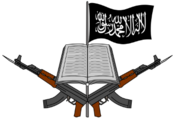History
 |
Monotheism
Wahhabi Teachings Incorporate
- The concepts of hejira (flight from non-Wahhabi traditions).
- takfir (ex-communication of other Muslims as infidels).
- armed jihad as not only permissible but obligatory against unbelievers and non- Wahhabi Muslims, who are stigmatized as mushrikin or idolators.
Wahhabism owes its influence to a personal and political alliance that Ibn al-Wahhab forged with Muhammad ibn Saud, the ruler of Diriyya, in Najd. Ibn Saud pledged his support to Al-Wahhab in waging jihad against all those who deviated from Wahhabi doctrines in return for religious sanction for his military campaigns. Nevertheless, Wahhabism remained a marginal and heterodox tendency within Islam until Abd al-Azziz ibn Saud expelled the Hashemites from the Hejaz, the region containing the holy cities of Mecca and Medina, and established the Kingdom of Saudi Arabia in 1932.













